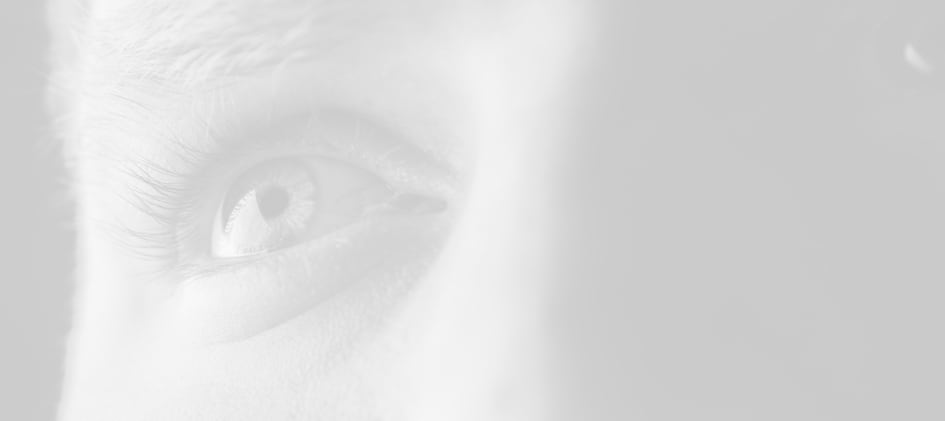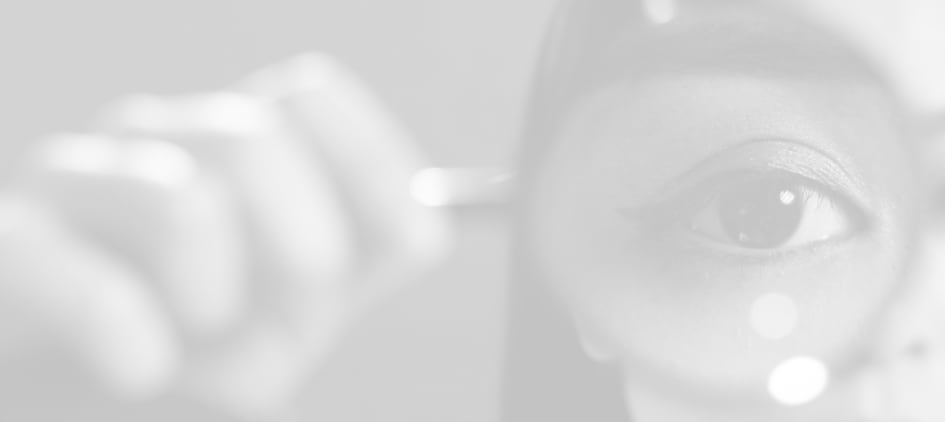Blurry vision is commonly associated with changes in our glasses or contact prescription. However, it’s also a symptom associated with several eye conditions, including dry eyes.
Dry eyes can cause blurry vision. This occurs when an unstable tear film causes the eye’s surface to become rough, scattering light and making it difficult to focus clearly on objects.
Understanding Dry Eyes
Dry eye is a common, chronic eye condition affecting approximately 21% of Canadians. Dry eye is marked by a gritty, dry sensation that often prompts individuals to rub their eyes throughout the day.
This sensation occurs when your tears don’t provide adequate moisture and lubrication to the surface of the eye. Typically, this is caused by reduced tear production or increased tear evaporation resulting from an unstable tear film.
Tears play an important role in maintaining ocular health and providing visual clarity. There are several components to the tear film. An issue with any of these layers can lead to an unstable tear film, causing dryness.
There are two main types of dry eye:
- Aqueous Dry Eye: This occurs when the lacrimal glands along the eyelids fail to produce enough tears to keep the eyes adequately moisturized.
- Evaporative Dry Eye: Often related to Meibomian Gland Dysfunction (MGD), this occurs when tears evaporate too quickly from the eye’s surface due to insufficient oil production.
Several symptoms are associated with dry eyes, including:
- Redness
- Blurry vision
- Watery eyes
- Light sensitivity
- Tingly or burning sensation
Anyone can develop dry eye, but certain factors can increase the risk of developing this condition, including:
- Age, as tear production naturally declines as we grow older.
- Environmental conditions like windy, dry, or smokey climates, which can increase tear evaporation.
- Lifestyle factors like improper contact lens wear and care, constant exposure to digital screens, and not removing eye makeup.
Dry eye isn’t necessarily a serious condition. However, unmanaged dry eye can increase an individual’s risk of developing other, more serious complications.
Therefore, managing dry eyes is vital. Visiting your optometrist for a dry eye consultation will help determine the underlying cause of dryness and the severity of dryness by examining the health of your eyes and tear film. This will allow your optometrist to develop a dry eye therapy plan tailored to your needs.

How Dry Eyes Affect Vision
Dry eyes can impact vision by causing blurry vision.
Dry eye occurs because of the eye’s inability to maintain a smooth, clear outer tear layer, which is important for proper light refraction and necessary for sharp vision.
When the tear film is unstable, the eye’s surface becomes dry, irregular, and rough, causing light to scatter, leading to blurry vision. This makes it difficult to focus clearly on objects. Dryness can fluctuate throughout the day, especially after prolonged computer work, reading, or long-day contact lens use.
Blurry vision can develop from dry eyes even while wearing glasses or contacts. While these corrective options are designed to improve visual clarity, they don’t correct for disruptions of the tear film.
Contacts in particular can aggravate dryness and discomfort by absorbing moisture, increasing the friction on your eye, and changing the composition of your tear film.
If you’re experiencing blurry vision, make sure to schedule an appointment with your optometrist.
Dry Eye Management & Prevention
Dry eye disease itself can’t be cured, but it can be resolved by managing its underlying causes to alleviate symptoms.
From over-the-counter solutions to at-home remedies your optometrist can develop a therapy plan tailored to your unique ocular needs for long-term relief.
- Humidifier: Using a humidifier in your space to maintain solid humidity levels helps prevent excessive dryness in the air that can affect your eyes.
- Stay Hydrated: Drink plenty of water throughout the day to promote overall hydration. Aim to drink about 8 to 10 glasses of water a day!
- Artificial Tears: One of the most popular over-the-counter solutions, these drops mimic the natural composition of tears to provide adequate hydration to the eye’s surface.
- Warm Compress Mask: Using a warm compress mask over your eyes and gently massaging around the area for a few minutes helps unclog any oil glands along the eyelids needed for adequate tear secretion.
- Limit Screen Time: Minimize screen time and take adequate breaks between periods of work to reduce eye strain and potential dryness caused by prolonged exposure to digital devices.
Advanced Therapies
Depending on the severity of your dry eyes, your optometrist may recommend advanced therapy alongside OTC solutions and lifestyle changes.
These treatments are done in-clinic, and are quick, non-invasive, and relatively gentle, allowing you to resume your daily routine with no required downtime.
- Intense Pulsed Light (IPL): Using controlled pulsed light and gentle heat, this device helps reduce inflammation and stimulates the meibomian glands, helping them to secrete better quality oil to lubricate the eye’s surface.
- Radiofrequency Treatment: Similar to IPL, this device uses radio waves to gently heat the eyelid and surrounding area. Not only does this help unclog meibomian glands, but it also helps improve collagen production, enhancing the look of skin while providing improved tear distribution.
- ZEST (Zocular Eyelid System Treatment): This is an eyelid exfoliation treatment that deep cleans the eyelids. Using a gentle, microsponge applicator, excess cells and bacteria along the eyelids are removed, helping to unclog tear glands and improve oil secretion.
Schedule a Visit
Dry eyes impact our ability to focus and interfere with our quality of life. With several therapies available, the key is finding the option most suitable for your ocular needs.
The journey for long-term relief begins by connecting with our team in Collingwood. Visit us at Collingwood Optometry or Cwood Eyecare for a dry eye consultation.























